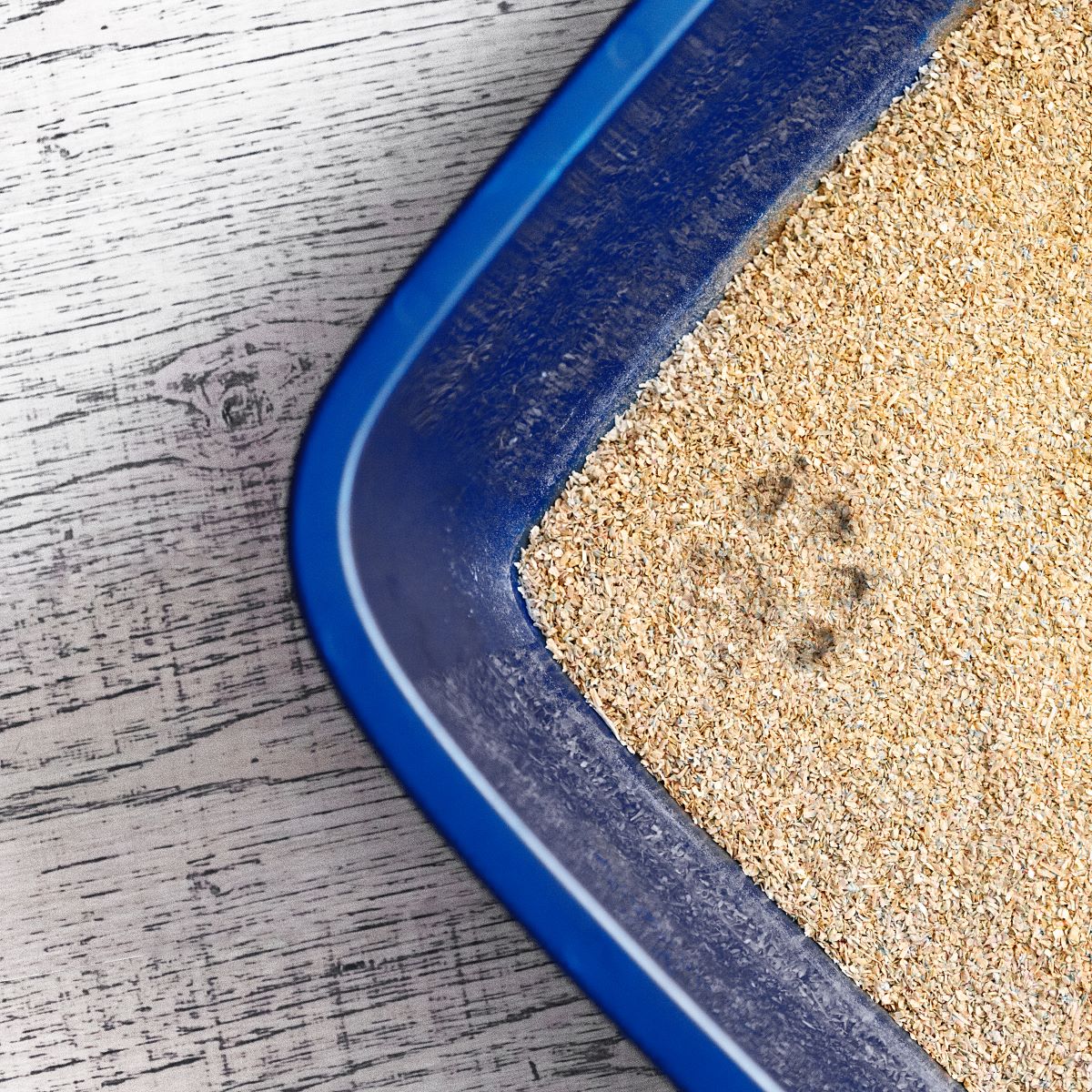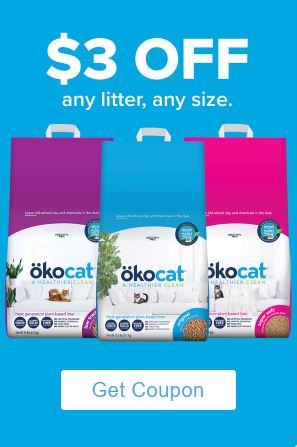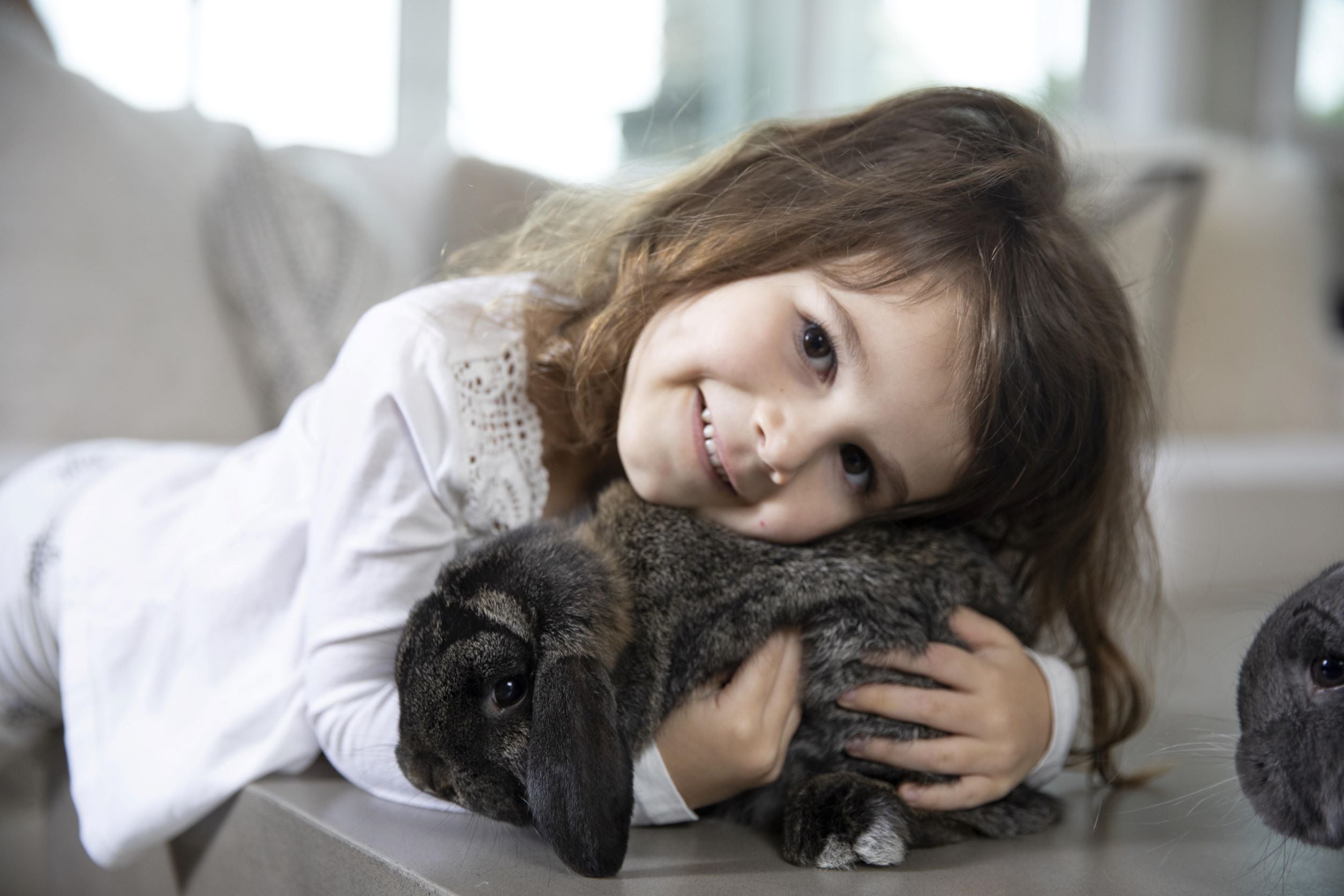Back to Basics: How to Set Up the Purr-fect Litter Box with ökocat® Natural Cat Litter
Let’s be real: nobody adopts a cat because they love scooping litter boxes. But the truth is, when you nail the basics, the litter box doesn’t have to be a daily battle. In fact, it can be… dare we say… easy. Your cat gets a clean, cozy bathroom, and you get a fresher home (and way fewer side-eye glares from your feline roommate).
So, let’s go back to basics—because the secret to a happy cat household might just start with the litter box.
Step 1: Pick the Right Box (Yes, It Matters)
Your cat may not be picky about sleeping on your laptop keyboard, but when it comes to their bathroom, they definitely have opinions.
Bigger is better: Think of it like this—would you rather use a cramped porta-potty or a roomy spa bathroom? Same goes for your cat.
Covered or uncovered? Some cats want privacy. Others? Exhibitionists. Let them decide.
One per cat, plus one extra: It’s the golden rule. Sharing is not caring when it comes to litter boxes.
Step 2: Ditch the Clay, Go Natural
Here’s where ökocat® natural litter shines (literally—it’s wood-based and kind of beautiful). Unlike dusty, perfume-heavy clay litters, ökocat:
Locks in odors naturally (so your cat’s bathroom doesn’t become your home’s signature scent).
Is 99% dust-free (breathe easy, whiskers included).
Eco-friendly (good for your cat, your home, and the planet).
Gentle on paws (imagine a soft forest floor instead of gravel—much nicer).
Step 3: Layer It Just Right
Cats love to dig and cover. The sweet spot? About 2–3 inches of ökocat. Too shallow and they can’t cover. Too deep and you’ve basically created a wood-chip beach.
Step 4: Location, Location, Location
Think about where you would want a bathroom. Not in the middle of the kitchen, right? Same goes for your cat.
Quiet, low-traffic areas work best.
Away from food and water (cats are clean freaks).
Skip the scary laundry room with the noisy spin cycle—no one wants that bathroom anxiety.
Step 5: Keep It Fresh (Without Losing Your Mind)
Here’s the routine:
Scoop daily (your cat will thank you with fewer “accidents”).
Top it off weekly with fresh ökocat.
Swap completely every 4–6 weeks. Bonus: ökocat’s natural odor control means you’ll do full cleanouts less often than with clay.
Back to Basics = Back to Happy Cats
At the end of the day, your cat doesn’t ask for much: a comfy nap spot, food on time, and a litter box that doesn’t make them cringe. Set it up right with ökocat natural litter, and you’ll both breathe easier (literally). Because a happy litter box = a happy cat = a happier you.
Read MoreYour Ultimate Guide to Choosing the Right ökocat Litter for Your Cat's Needs
Choosing the right cat litter might not seem like a big deal—until your cat decides it is. Whether you're new to the ökocat brand or simply looking to try a different formula, this guide will help you find the perfect match for both your cat’s needs and your lifestyle.
Why ökocat?
ökocat is a natural, plant-based cat litter made from sustainably sourced wood fiber—free from harmful chemicals, synthetic fragrances, and dusty clay or silica. It's designed to be healthier for your cat, your home, and the planet. But with several formulas to choose from, how do you know which one is right for you?
Let’s break it down.
1. Best for Long-Haired Cats: ökocat Low Tracking
If your feline has a fabulous coat that tends to trap litter between their toes, Low Tracking is your go-to. This formula is made of mini pellets that are easy on paws and less likely to cling to long fur and get kicked out of the litter box.
Top Benefits:
Mini-pellets that won't stick to paws or hair
Excellent clumping and odor control
Low tracking
2. Best for Odor Control: ökocat Original
If you need serious odor control, especially in a multi-cat household, ökocat Original Premium natural cat litter delivers. This formula locks in moisture and neutralizes odors on contact—without any artificial fragrances.
Top Benefits:
Superior odor control
Clumps tight for easy scooping
Long-lasting with less waste
3. Best for Cats with Sensitive Systems: ökocat Dust-Free or Low Tracking
Got a sneezing kitty (or human)? Try Dust-Free or Less Mess—both are crafted for cats (and people) who are sensitive to dust or fragrances.
Dust-Free:
Clean paper fiber with virtually no dust
Ideal for allergy-prone cats and homes
Also great for post-surgical needs
Low Tracking Less Mess:
Pellet-style litter that stays in the box
Great for active diggers or messy cats
4. Best for Kittens: ökocat Super Soft or Dust-Free
Kittens deserve a gentle start, and Super Soft natural wood clumping cat litter is perfect for tiny paws and early litter box training. For kittens with extra sensitive noses or respiratory systems, Dust-Free is also a safe pick.
Why It Works:
Non-toxic and natural
Gentle on small paws
Safe if accidentally ingested during learning but always monitor carefully if they eat too much
5. Best for Eco-Conscious Cat Parents: All ökocat Litters
Honestly, all ökocat formulas are eco-friendly, biodegradable, and sustainably sourced. They're made from reclaimed wood and are 100% compostable—yes, even the packaging! You can feel good about what you’re buying and where it ends up.
Quick Comparison Chart
okocat Formula
Best For
Texture
Clumping
Dust Level
Super Soft
Sensitive paws, kittens
Fine, soft
✔️
Low
Original Clumping
Odor control, all cats
Medium granules
✔️
Low
Low Tracking
Long hair cats, active diggers, tracking control
Pellets
✔️
Low
Dust-Free
Allergies/sensitivity
Fine, refined fiber
No
Virtually none
Final Tips for Success
Transition gradually. Mix ökocat with your old litter over 7–10 days to help your cat adjust.
Scoop daily. While ökocat lasts longer, frequent scooping keeps the box fresher.
Choose the right litter box. Low-walled boxes work best for kittens, while high-sided ones help reduce mess with pellet formulas.
Ready to Make the Switch?
No matter your cat’s personality, coat type, or sensitivities, there's an ökocat litter that fits purr-fectly. Natural, effective, and safe—it’s litter made for living.
👉 Explore all ökocat formulas here and find your feline’s favorite today!
Read MoreThe Environmental Benefits of Natural Cat Litter: Why It’s Time to Ditch the Clay
As cat parents, we do a lot to care for our feline friends — feeding them the best food, giving them comfy places to nap, and keeping their litter boxes clean. But have you ever stopped to think about the impact your litter choice has on the planet?
Traditional clay litter might be a go-to for convenience, but it comes at a steep environmental cost. The good news? Natural cat litter like okocat is not only better for the Earth, it’s also better for your cat. Here’s why making the switch is a simple way to do good — for both your pet and the planet.
1. No Strip Mining, No Problem
Clay litter is made from bentonite, a material that’s extracted through strip mining — a destructive process that removes entire layers of the earth’s surface, destroying ecosystems and contributing to erosion and water pollution.
Natural litters, on the other hand, are made from renewable or reclaimed materials like wood, paper, corn, wheat, or grass. No digging up forests or mountains required.
2. Biodegradable & Compostable
Unlike clay litter, which ends up sitting in landfills for centuries, natural litters break down over time. Many are biodegradable and even compostable — especially those made from paper or wood. That means less waste and a smaller carbon footprint every time you scoop.
3. Lower Carbon Pawprint
Producing and transporting clay litter takes a lot of energy — from mining and processing to heavy shipping loads. Natural litters are often made closer to home and from lightweight materials, reducing greenhouse gas emissions throughout the supply chain.
4. Free from Harsh Chemicals and Fragrances
Natural litter is usually free from synthetic scents, dyes, and chemical additives, making it a safer choice for your home and the environment. Less chemical runoff, cleaner waterways, and healthier indoor air for your family and pets.
5. Sourced Sustainably
Many natural litter brands take sustainability seriously, using responsibly harvested wood, recycled paper, or upcycled agricultural waste. Choosing these options supports a circular economy and reduces demand for virgin resources.
🐾 Small Paws, Big Impact
Making the switch to ökocat might feel like a small change in your daily routine — but it adds up to big benefits for the planet. Every box of ökocat you use helps save landfill space, reduce carbon emissions, and preserve natural habitats.
So why just cover up messes when you can clean up your environmental footprint at the same time?
Read MoreWhy Clay Cat Litter Is Bad for Your Cat—and the Planet
If you’ve ever owned a cat, you’ve probably used traditional clay-based cat litter at some point. It’s cheap, widely available, and does the job when it comes to clumping and odor control. But beneath its convenience lies a host of environmental and health concerns that many pet owners aren’t aware of. Let’s dig into why clay cat litter may not be the best choice—for your feline friend or for the Earth.
1. Environmental Cost: Strip Mining and Waste
Clay cat litter is typically made from sodium bentonite, a type of absorbent clay that forms clumps when wet. The problem? This clay is obtained through strip mining, a destructive process that removes large areas of topsoil and vegetation, permanently damaging ecosystems and contributing to soil erosion and habitat loss.
Each year, millions of tons of clay are mined solely for cat litter. Unlike biodegradable litters (such as those made from paper, wood, or corn), clay litter does not break down in landfills. It sits there indefinitely, contributing to the growing problem of pet waste pollution.
2. Toxic Dust and Respiratory Issues
Many clay litters produce a fine dust—especially when poured or stirred. This dust can contain silica, a known carcinogen when inhaled over long periods. For humans, particularly those with asthma or allergies, this dust can be irritating. But for cats, who spend significant time in close contact with their litter boxes, the risk is even greater.
Cats can inhale or ingest this dust during grooming. Over time, this may contribute to respiratory problems, especially in kittens, older cats, or those with pre-existing conditions.
3. Chemical Additives and Fragrances
To make clay litter more “appealing” to consumers, many brands add chemical fragrances to mask odors. While the smell might be pleasant to us, cats have a much stronger sense of smell and may find the scent overwhelming or irritating. Some additives may even trigger allergic reactions or discourage your cat from using the litter box altogether.
Furthermore, the chemicals used in some scented litters may be harmful if ingested or absorbed through the skin over time—something to consider for cats with sensitive paws or grooming habits.
4. Not Flushable or Compostable
Clay litter should never be flushed down the toilet—it can clog plumbing and septic systems. Nor is it compostable. Disposing of clay litter means bagging it in plastic and sending it to a landfill, where it will sit for centuries. By contrast, many natural litters are biodegradable and even compostable (when disposed of properly and without pet waste contamination).
5. There Are Better Alternatives
Fortunately, there are a growing number of eco-friendly cat litter alternatives that are better for your pet and the planet. These include:
okocat Wood-based litter – Naturally deodorizing and biodegradable.
Recycled paper litter – Soft on paws and highly absorbent.
Wheat or corn litter – Clumping, compostable, and often flushable (check your local laws), however, because they are food based, mold may grow.
Coconut or walnut shell litter – Sustainable and effective at odor control.
These options are not only better for the environment, but often safer and healthier for your cat as well.
In Conclusion
Clay cat litter may be the norm, but it comes at a significant cost—to our environment and potentially to our cats’ health. As awareness grows, so do the options for safer, more sustainable litter. Making the switch to an eco-friendly alternative is a simple step that benefits your feline companion and the planet they call home.
Read MoreThe Joy of Cat Ownership: Why Feline Friends and ökocat Natural Cat Litter Make Life Better
There’s something undeniably comforting about the quiet presence of a cat in your home. Whether they’re curled up in your lap, perched on a windowsill, or darting around in a sudden burst of energy, cats bring a special kind of companionship that’s equal parts low-maintenance and high-reward. If you're considering adding a furry friend to your household, here's why cat ownership—and choosing products like ökocat natural cat litter—can make your life both happier and easier.
1. Low-Maintenance Companions
Cats are famously independent. They don’t require daily walks or constant attention, making them ideal for busy individuals, apartment dwellers, or anyone who prefers a more relaxed pet relationship. Feed them, clean their litter box regularly, and give them affection when they ask for it—and they’ll thrive.
2. Emotional and Health Benefits
Numerous studies have shown that having a cat can reduce stress and anxiety. The simple act of petting a cat releases feel-good hormones like oxytocin, and their soothing purrs can help lower blood pressure. In fact, cat owners are known to have a lower risk of heart attack and stroke compared to non-cat owners.
3. Great for Small Spaces
Cats don’t need a yard or large open spaces to be happy. With a few vertical options like cat trees or shelves and a cozy sleeping nook, your feline friend will be perfectly content—even in a studio apartment.
4. Clean and Quiet
Unlike some pets, cats are naturally clean animals. They groom themselves frequently and are generally quiet, making them excellent roommates. Their litter habits, when supported with the right products, make cleanup easy and odor-free.
5. The ökocat Advantage
Speaking of cleanliness—one of the most underrated aspects of cat ownership is choosing the right litter. That’s where ökocat natural cat litter stands out. Made from sustainably sourced, biodegradable wood fiber, ökocat is a dust-free, chemical-free alternative to traditional clay litters. Here’s why it’s a favorite among cat parents:
Superior Odor Control: The natural wood fibers absorb moisture and trap odor without artificial fragrances.
Dust-Free and Low-Tracking: Unlike clay litter, ökocat doesn’t create clouds of dust, keeping your air and surfaces cleaner.
Eco-Friendly: It’s biodegradable and compostable, reducing your environmental impact.
Lightweight and Easy to Clean: Easier to pour, scoop, and dispose of—ökocat makes litter box maintenance a breeze.
6. A Greener, Happier Home
By combining the joy of cat companionship with eco-conscious products like ökocat, you’re not just improving your quality of life—you’re making a responsible choice for the planet, too. Less waste, cleaner homes, and healthier pets: it’s a win-win-win.
Final Thoughts
Owning a cat is one of life’s simpler pleasures. They ask for little but give so much in return. And with the right tools—like ökocat natural cat litter—you can enjoy all the love and comfort they bring, without the mess or hassle. Whether you’re a first-time cat owner or a lifelong feline fan, one thing’s certain: life is better with a cat by your side.
Read MoreFilter - Key Words








 email us
email us